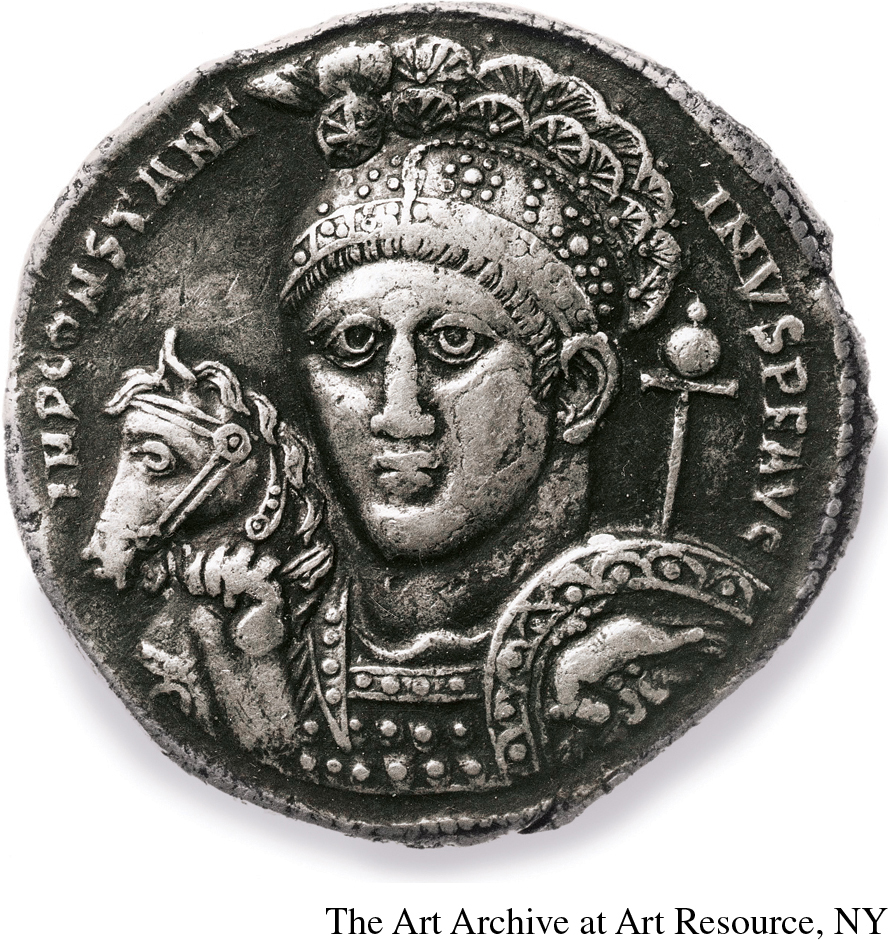From the Great Persecution to Religious Freedom
Printed Page 217
Important EventsFrom the Great Persecution to Religious Freedom

To eliminate what he saw as a threat to national security, Diocletian in 303 launched the so-called Great Persecution to please the gods by suppressing Christianity. He expelled Christians from official posts, seized their property, tore down churches, and executed anyone who refused to participate in official religious rituals.
His three partners in the tetrarchy applied the policy unevenly. In the western empire, official violence against Christians stopped after about a year; in the east, it continued for a decade. The public executions of Christians were so gruesome that they aroused the sympathy of some polytheists. The Great Persecution ultimately failed: it undermined social stability without destroying Christianity.
Constantine changed the world’s religious history forever by converting to the new faith. During the civil war after Diocletian’s resignation, right before the crucial battle of the Milvian Bridge in Rome in 312, Constantine reportedly experienced a dream promising him God’s support and saw Jesus’s cross in the sky surrounded by the words “Under this sign you will win the victory.” Constantine ordered his soldiers to paint “the sign of the cross of Christ” on their shields. When his soldiers won a great victory in that battle, Constantine attributed his success to the Christian God and declared himself a Christian.
However, Constantine did not make polytheism illegal and did not make Christianity the official state religion. Instead, he and his polytheist co-emperor Licinius enforced religious freedom, as shown by the Edict of Milan of 313. The edict proclaimed free choice of religion for everyone and referred to protection of the empire by “the highest divinity”—a general term meant to satisfy both polytheists and Christians. (See “Document 7.2: The Edict of Milan on Religious Freedom.”)
REVIEW QUESTION What were Diocletian’s policies to end the third-century crisis, and how successful were they?
Constantine promoted his newly chosen religion while trying to placate traditional polytheists, who still greatly outnumbered Christians. For example, he returned all property confiscated from Christians during the Great Persecution, but he had the treasury compensate those who had bought it. When in 321 he made the Lord’s Day of each week a holy occasion on which no official business or manufacturing work could be performed, he called it Sunday to blend Christian and traditional notions in honoring two divinities, God and the sun. He decorated his new capital of Constantinople with statues of traditional gods. Above all, he respected tradition by continuing to hold the office of pontifex maximus (“chief priest”), which emperors had filled ever since Augustus.